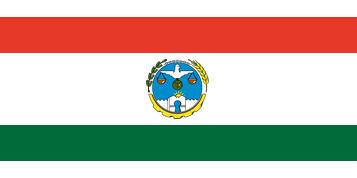
The
State of Harrari People

Harari is one of the most popular historical towns in the Eastern part of Ethiopia. The State has no administrative zones or woredas. The total number of kebeles of the city are 19, while the rural part of the State has 17 farmers associations.
CAPITAL CITY
The capital city of the State is Harar
LOCATION
The State of Harari people is located in the Eastern part of Ethiopia, surrounded by the State of Oromia.
AREA
The State's size is estimated at 340 square kilometres.
POPULATION
According to the 1994 census result the population is 131,139. The percentage share of males and females is about 50% each. The urban residents of the State were 76,378 while its rural inhabitants were 54,761. This State is the only member state of FDRE where the majority of its population lives in urban area.
The ethnic composition in the State include, Oromo 52.3%, Amhara 32.6%, Harari 7.1%, and Guragies 3.2%. Harari language is the official language of the State.
According to the 1994 census result the religious composition of the population of the State indicates that 60.3% were Muslims, 38.2% Orthodox Christian, 0.9% Protestants, 0.55% Catholics, and 0.1% followers of other religious groups.
MAJOR ECONOMIC ACTIVITIES
The State’s population is engaged predominantly in farming, civil service and commerce. Sorghum, maize, chat, coffee, orange, mango are among major agricultural products.
An exotic variety of goods is offered for sale, and colourful cloths and jewellery worn by the people create a wild array of colour. The Harari people excel in artisan crafts, such as weaving silver and cooper filigree, tanning, cutlery and blade production and sandal making.
TOPOGRAPHY AND CLIMATE
Harari lies 51 kilometers to the south east of DireDawa. It is located in the eastern wall of the Great Rift Valley looking over the vast Danakil desert to the north, the cattle rich savannahs to the south and fertile lands of the Harar mountains to the east. It lies between two rivers, tributaries of the Erer, on the southern edge of a vast plateau. The surrounding mountains divide the Great Rift valley from the plains of the Ogaden. The climate of the State is one of the most pleasant in the country. Temperature is even between 17.1°C-20.2°C throughout the year. The coolest season (18.7°C) which is between June-September, coincides with heavy rains accompanied by storms and strong electrical discharges. The average annual intensity of precipitation is about 750-1,000 mm. The mean amount of rainfall over three years as registered 10 years ago was 1,509 mm.
TOURISM AND HERITAGE
The origin of the walled city of Harar dates before the thirteenth century, the houses of the old city are constructed of stone and plaster, with flat roofs, Harar’s strategic location made it an important centre of Islamic culture and commerce. With its 99 mosques. Harar is considered to be the fourth most holy city of Islam.
The
setting of medieval walls tightly embracing the ancient city,
its rich and exciting market-place, its towering and
majestic mountains, and
its bracing cool air make Harar an exciting place to visit.
The Rimbaud house, named after the renowned French poet, Arthur Rimbaud is also found in the vicinity of the walled city.
INVESTMENT
There are more than 80 investors with a capital of above 200 million Birr in the State. This will create employment opportunities for over 10,000 persons. Harrari is rich in construction minerals such as marble, granite, dolomite and asbestos. The investment activity includes in the sector of industry, agriculture, construction, mining, transport service and hotel.